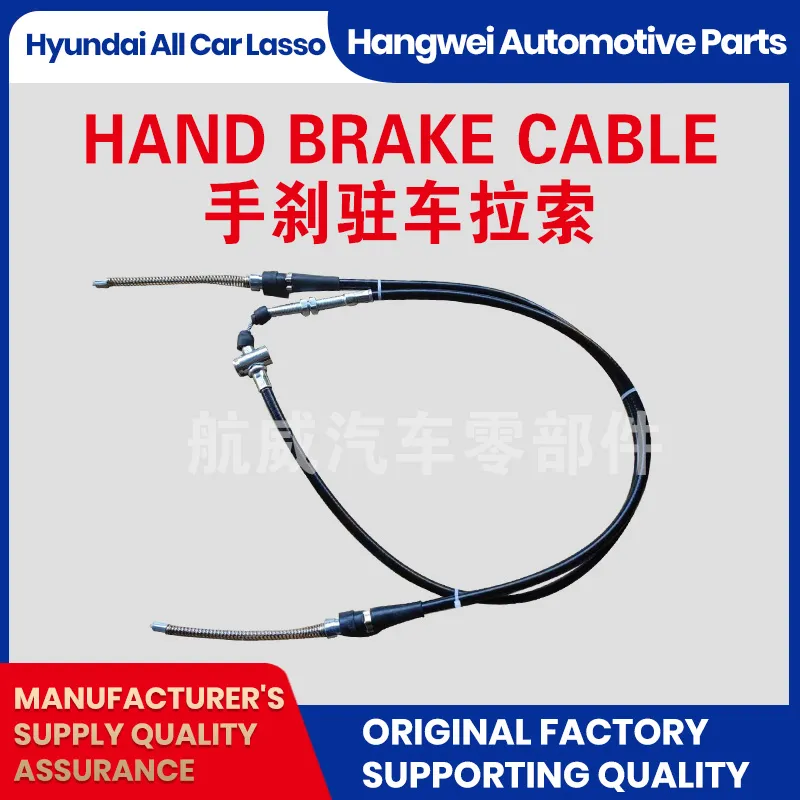gear cable
Understanding Gear Cables The Unsung Heroes of Cycling Efficiency
In the world of cycling, enthusiasts often focus on high-performance components like gears, brakes, and frames when discussing the nuances of a bike's mechanics. However, there exists a pivotal component that silently ensures smooth operation the gear cable. This seemingly simple strand of material plays a fundamental role in the functionality of a bicycle’s gear shifting system. In this article, we will explore the intricacies of gear cables, their types, maintenance, and their impact on cycling performance.
What are Gear Cables?
Gear cables are essentially thin, durable wires that connect the gear shifters on your handlebars to the derailleur system on your bike. The derailleur is the mechanism that shifts the chain between different gears on the bike's cassette (the gears on the rear wheel) or chainrings (the gears at the front). When a cyclist shifts gears, the action pulls or releases the gear cable, which in turn moves the derailleur to change the gear ratio. This process allows riders to adapt their pedaling efficiency to varying terrains, achieving optimal power output.
Types of Gear Cables
There are primarily two types of gear cables used in modern bicycles traditional steel cables and modern variants made of materials like stainless steel or coated fibers
.1. Steel Cables These cables are robust and have been the standard for many years. They are relatively inexpensive and provide reliable performance. However, they may suffer from corrosion and wear over time, which can lead to impaired shifting efficiency.
2. Coated Cables These are more advanced options that typically include a Teflon or polymer coating, which reduces friction as the cable moves through the housing. This results in smoother shifts and increased durability. They are particularly beneficial for those who frequently ride in wet or harsh conditions, as they resist water and dirt buildup.
3. Drop Bar and Flat Bar Cables Depending on the type of bike, gear cables may vary slightly in length and design. For instance, drop bar cables are often longer to accommodate the routing on racing bikes, while flat bar cables are designed for mountain and hybrid bikes.
gear cable

Maintenance of Gear Cables
Proper maintenance of gear cables is imperative to ensure optimal performance and longevity. Here are some tips for taking care of your gear cables
1. Inspect Regularly Check your cables for signs of fraying or rust. A damaged cable can lead to poor shifting or complete gear failure.
2. Clean and Lubricate Keeping the cable and housing clean is essential. Use a mild degreaser to remove dirt, followed by lubrication to reduce friction. This ensures a smooth functioning cable system.
3. Adjust Tension Sometimes, cables can stretch or slacken over time, affecting shifting performance. Most shifters allow for cable tension adjustment, which can enhance shifting accuracy.
4. Replace When Necessary If you notice that your gear shifts are becoming increasingly sluggish or inconsistent, it might be time to replace the cables. This is often more economical than repairing other gear components that could wear out due to cable failure.
The Impact on Performance
The condition and quality of your gear cables directly affect cycling performance. Smooth and accurate gear changes allow for better adaptation to varying terrains, which can enhance endurance and reduce fatigue. Conversely, worn or poorly maintained cables can lead to missed shifts and added strain on the rider, particularly during competitive events.
In conclusion, while gear cables may not be the most glamorous component of a bicycle, they are undeniably essential. Whether you are a casual cyclist or a competitive racer, understanding the importance of gear cables and maintaining them properly can significantly impact your riding experience. So next time you’re gearing up for a ride, take a moment to appreciate these unsung heroes of cycling efficiency.
-
Upgrade Your Control with Premium Throttle CablesNewsAug.08,2025
-
Stay in Control with Premium Hand Brake CablesNewsAug.08,2025
-
Experience Unmatched Performance with Our Clutch HosesNewsAug.08,2025
-
Ensure Safety and Reliability with Premium Handbrake CablesNewsAug.08,2025
-
Enhance Your Vehicle with High-Performance Clutch LinesNewsAug.08,2025
-
Elevate Your Ride with Premium Gear CablesNewsAug.08,2025
